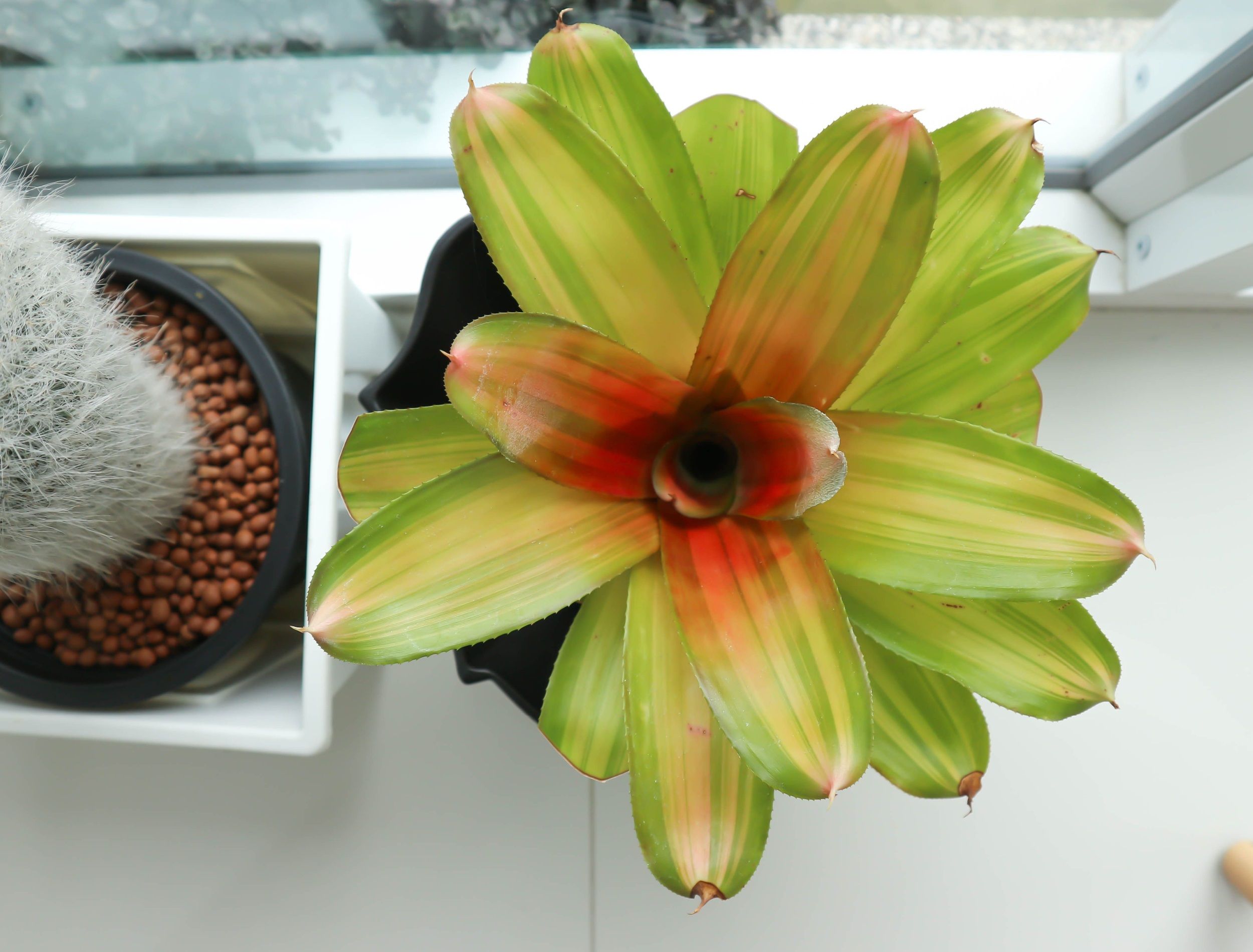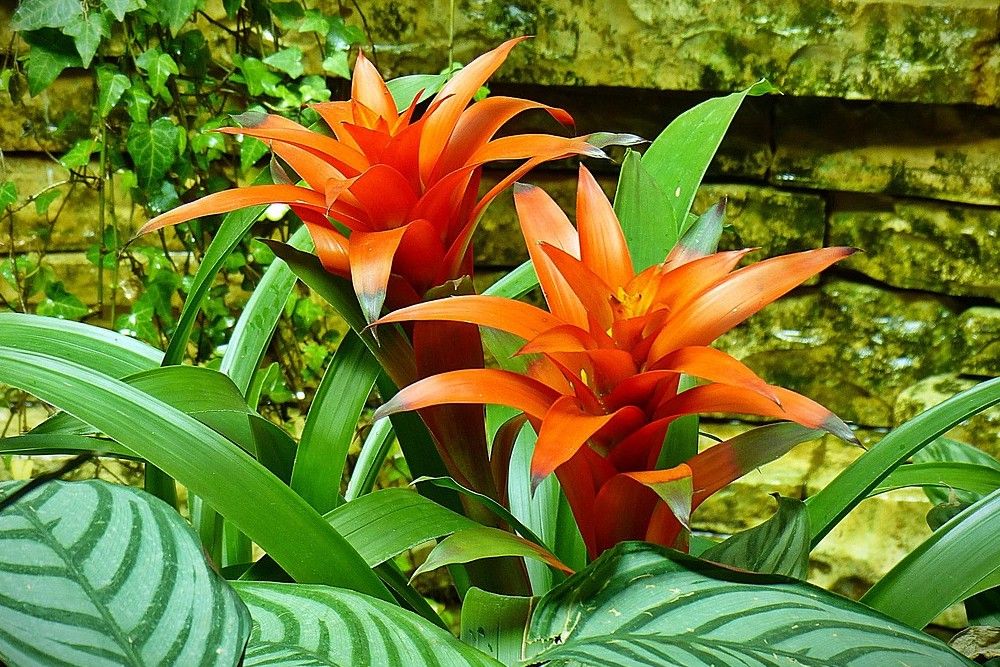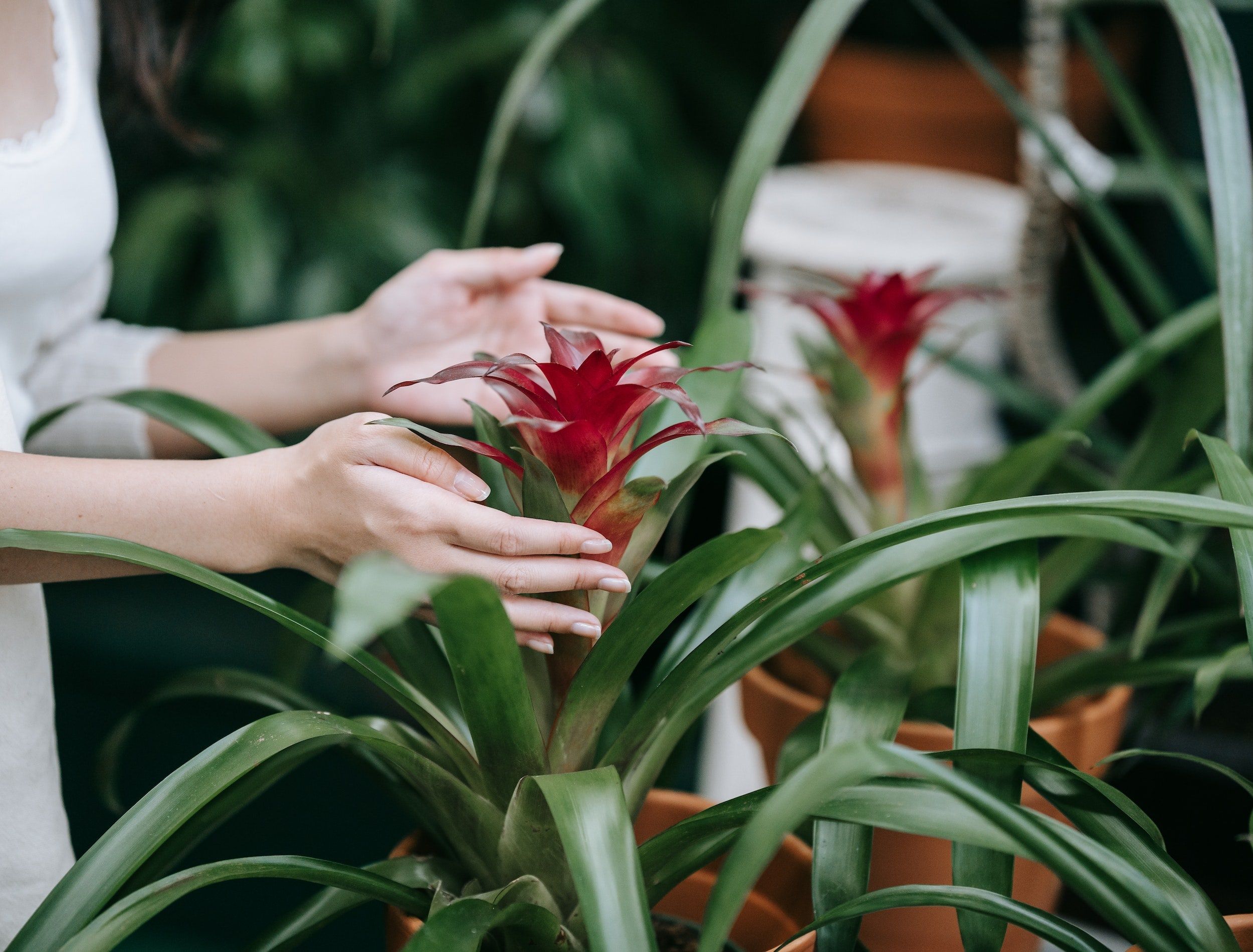Introducing your new favorite pal, the bromeliad! A hardy, easy-to-care-for houseplant that livens up any room.
It's a vibrant, exotic-looking tropical plant that is easy to grow and care for, making it a nice plant for novice gardeners. Therefore, if you want to incorporate stunning colors and interesting textures in your interiors, learn below how to grow and look after them!
Bromeliad Plant
Image credits: bernswaelz via Pixabay
Bromeliads (Bromeliaceae) are a large group of diverse plants native to the tropical Americas. These plants have thick foliage that grows in striking rosettes called bracts, which are the primary charm of the plants. These bracts have bright colors, including red, orange, yellow, hot pink, and electric blue.
When you see your plant begin to bloom, cherish them because it only happens once! Towards the end of their life bromeliads display tiny yellow or white flowers.
Bromeliads are also epiphytes, meaning they can grow on other plants such as tree bark without being intrusive or hurtful. It also means they soak up moisture from the air through their foliage. They have this adaptation to position themselves in ample light and gather necessary resources.
Fun fact: Pineapples are also a type of bromeliad.
Materials Needed
Image credits: Huy Phan via Pexels
Here is everything you will need to grow and care for your bromeliad plant.
- Potting mix
- Seed tray or container with drainage holes
- Plastic bag
- Pots
- Sharp knife
How to Grow a Bromeliad Plant
Image credits: Foto-Rabe via Pixabay
Bromeliads are slow-growing plants that can be grown indoors from seeds or propagated from their naturally occurring offshoots (pups).
You can also find bromeliads in garden centers, which are sold in containers. The most popular varieties include Guzmania Lingulate (scarlet star), Neoregelia Carolinae ‘Tricolor’ (blushing bromeliad), and Aechmea Fasciata (silver vase).
Growing From Seeds
To grow bromeliads from seeds, fill a seed tray or a container with a free-draining, soil-less mix. You can also find readymade bromeliad compost.
Place the seed on the surface, not covering it with the potting mix. Now, dampen the mix by misting the seeds, cover the container with a plastic bag or a lid, and place it in a warm, dark area. Keep it at a temperature of 80 degrees Fahrenheit.
While caring you your growing bromeliad feed it with a high potassium fertilizer. Once the plant sprouts and germinates (if done properly, within four days) and has a few leaves, you can transfer it to a well-draining pot in five months.
Growing From Pups/Offsets
Before they die, many bromeliads produce baby plants called pups or offsets. You can repot these pups, ideally in April or May, once they are one-third the size of the mother plant.
Use a sharp knife to separate the pup from the mother and place it in a pot of free-draining compost mix. If the pup has roots already, bury them under the potting mix but keep the leaves above the surface. To make your soil-less mix add equal parts peat moss, perlite, and bark.
Water the plant, allow it to drain, and place it in a bright area away from direct sunlight.
Care Requirements
Image credits: Sasha Kim via Pexels
Bromeliads are easy-going plants that are not very demanding, despite their ornamental looks. Apart from the slightly different watering requirements, the plants require general care, like most low-maintenance houseplants.
Watering Needs
Many bromeliads have a cup or a well in the center of the rosette, which should always be filled with water. Ideally, you should use melted snow, rainwater, or distilled water at room temperature. Keep an eye on the water and change it frequently so it doesn't start to harbor disease.
You should also water the compost monthly to keep it moist but not soggy. Allow the compost to dry out between each watering session, in winter.
In case your bromeliad does not have a cup or a well, you must water the compost and allow the water to drain away before placing it in your decorative pot. Never let the plant stand in water.
Light Requirements
Bromeliads love bright light, but direct sunlight can scorch their leaves. Hence, keep your plant on an east- or west-facing window or a few feet away from a south-facing one. Don't fret, they'll do just fine in lower light conditions.
Bromeliads with thick, stiff leaves can tolerate brighter light than species with thin, soft leaves.
Fertilizing
Since bromeliads come from low-nutrient environments, you can use a fertilizer rich in potassium. But be wary, if you overfeed the plant, the vibrant leaf colors can diminish.
During the active growing period, in summer, apply water-soluble fertilizer at one-fourth strength about once a month and allow the excess to drain.
Ideal Temperature
Bromeliads thrive in the average household temperature, between 60 to 80 degrees Fahrenheit. This temperature range also encourages flowering. Once the buds originate, a cooler temperature of 55 degrees Fahrenheit will allow you to enjoy the flowers longer. The minimum temperature a bromeliad can tolerate is 50 degrees Fahrenheit.
Hence, if you buy a bromeliad in winter with outside temperatures below 50 degrees Fahrenheit, wrap the plant in a fabric or paper bag and bring it home in a heated car.
Humidity
Most bromeliads prefer a humid environment, though species with thick, leathery leaves can tolerate lower humidity. If your home tends to get dry, especially in winter when the heating is on, place your plant on a pebble tray. Keep the water level below the gravel surface to prevent saturating the compost.
If humidity levels happen to dip its okay. Bromeliads can tolerate periods of drought and dryness.
Potting Mix
Bromeliads do not get their nutrients from the soil; their roots are primarily used for anchoring the plant. Therefore, the best medium for your bromeliad is well-draining, which is different from the regular potting soil. The soil tends to hold too much moisture and can cause root rot.
Pest Control
Luckily, bromeliads are not very susceptible to severe pests but can attract mealybugs and scale insects. Treat a small pest infestation by wiping the pests away with an alcohol-soaked cotton swab. For a more widespread issue, spray the infected plant with a mixture of mild dishwashing liquid and water.
Bring the Tropic Home
Bromeliads are a wonderful addition to any home. However, these plants have over 3,000 species, with slightly varying requirements. So, ensure you know which type of bromeliad you own and care for it accordingly.
Share your thoughts, comments, and questions about this exquisite plant below. Maybe friends and family could find it useful!




